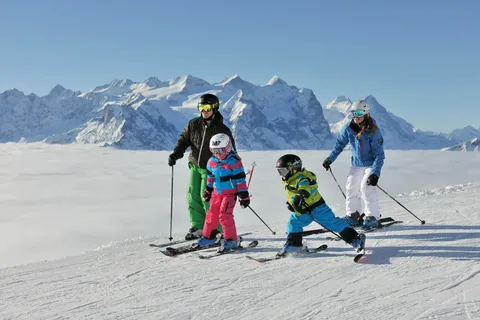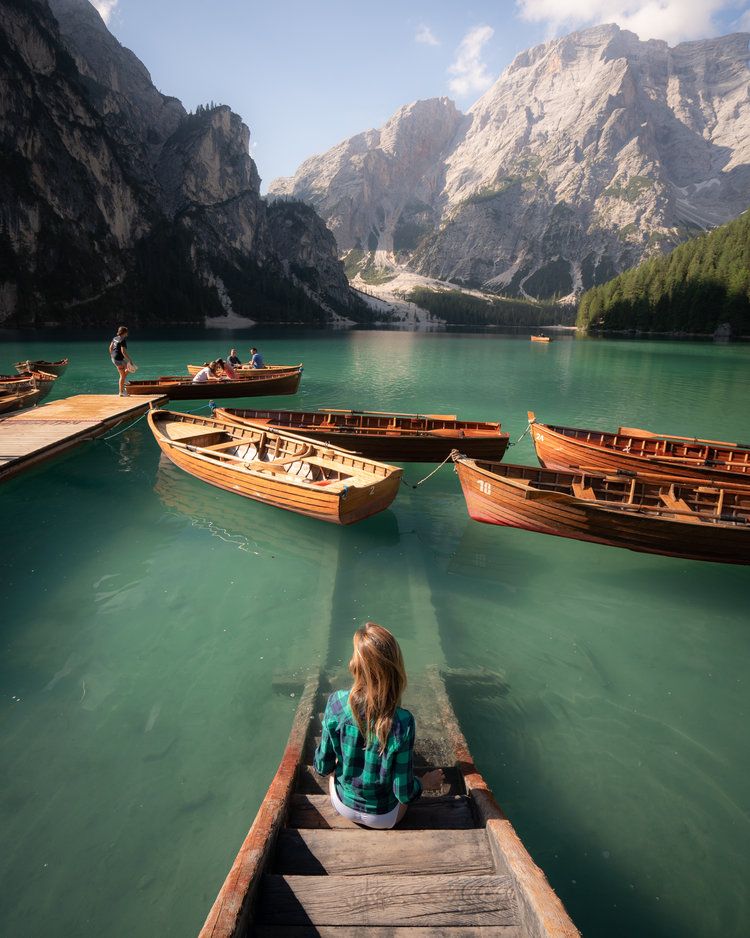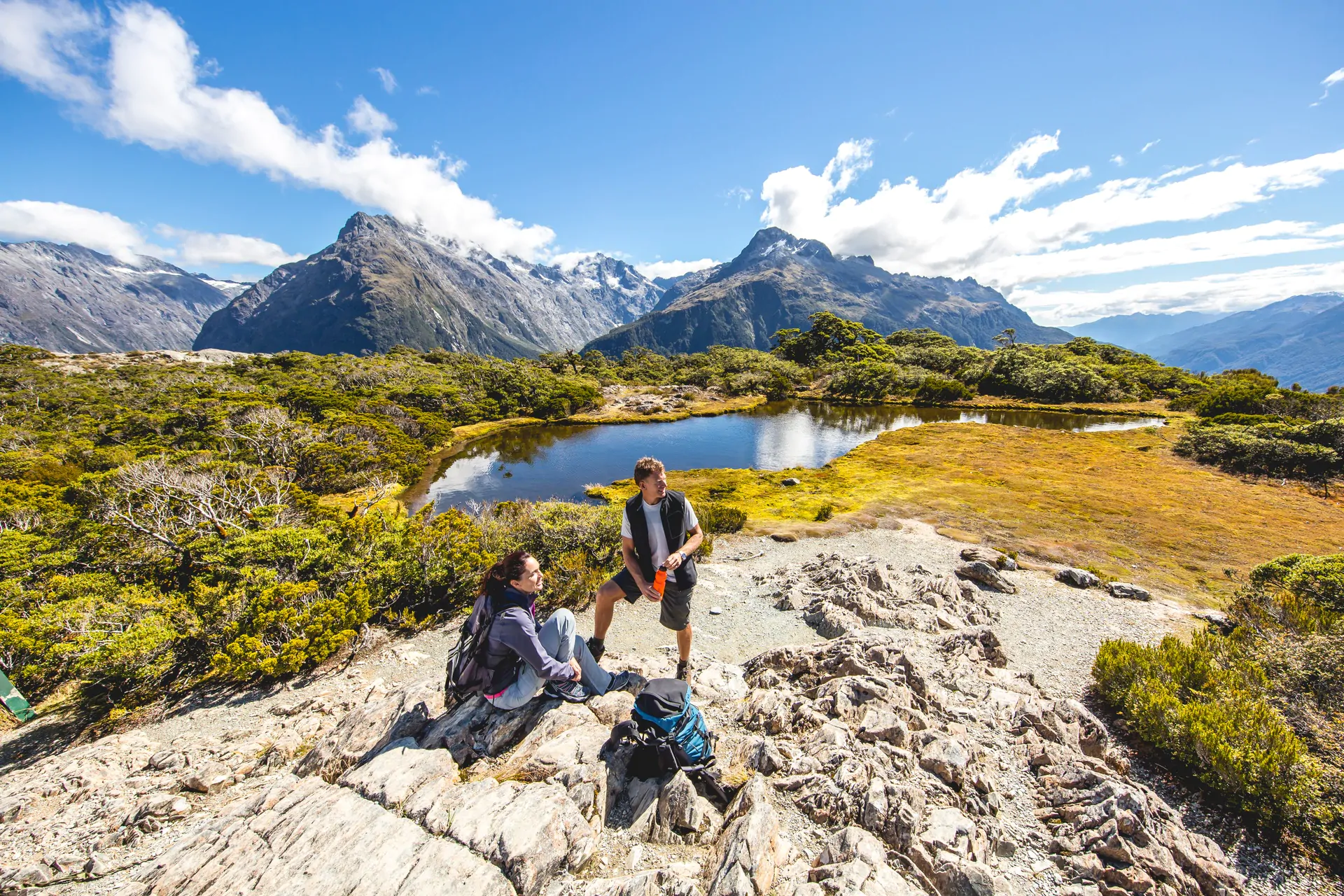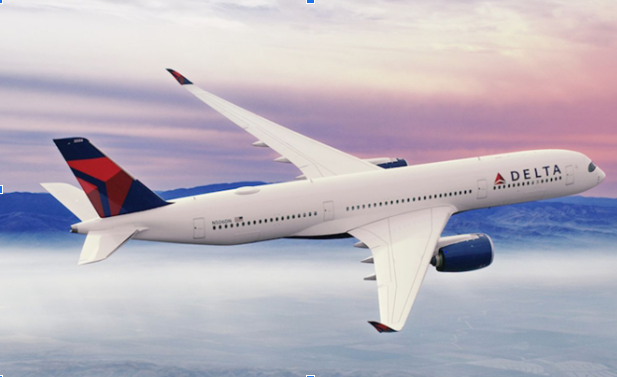Travel & Hospitality
Coolcaytions Escaping the Heat with Cool Destinations

In an era of rising global temperatures and increasingly sweltering summers, the concept of “Coolcaytions” has emerged as a compelling travel trend. Coolcaytions are essentially vacations designed to help individuals and families escape the oppressive heat by visiting cooler, more temperate destinations. This article delves into the allure of Coolcaytions, highlighting various cool destinations around the world, and providing practical advice for planning the perfect heat-escape vacation.
Concept of Coolcaytions
The term “Coolcaytions” is a portmanteau of “cool” and “vacations,” signifying a getaway to a place with a more temperate climate. This concept has gained traction as people seek respite from the heat, whether due to personal comfort, health concerns, or a desire to experience different climates and environments.

Image by Yandex .com
Importance of Climate in Vacation Planning
Climate plays a crucial role in vacation planning. While some travelers seek sunny beaches and tropical climates, others prefer cooler temperatures for a more comfortable and enjoyable experience. Coolcaytions cater to the latter group, offering destinations where the weather is pleasant, and activities are geared towards cooler climates.
Top Cool Destinations for Coolcaytions
Scandinavia, comprising countries like Sweden, Norway, Denmark, and Finland, is a prime destination for Coolcaytions. Known for its stunning natural landscapes, including fjords, forests, and lakes, Scandinavia offers a perfect escape from the heat.: Visit Stockholm, the capital city, with its beautiful archipelago and historic sites. For a more remote experience, explore the Swedish Lapland, where you can witness the Northern Lights and enjoy activities like dog sledding and ice fishing. The fjords of Norway are a must-see. The city of Bergen, surrounded by mountains and fjords, provides a cool climate and picturesque scenery. The Lofoten Islands offer a unique blend of rugged landscapes and cultural experiences.
Copenhagen, with its cool climate and vibrant culture, is an ideal destination. Enjoy the city’s historic sites, modern architecture, and culinary delights.
Finland**: Helsinki, the capital of Finland, offers a cool climate and a rich cultural scene. The Finnish Lapland is another excellent choice, known for its pristine wilderness and winter activities.
Canadian Rockies: A Majestic Escape
The Canadian Rockies, stretching through British Columbia and Alberta, provide a stunning backdrop for a Coolcaytion. With their snow-capped peaks, crystal-clear lakes, and abundant wildlife, the Rockies offer a refreshing escape from the heat. Banff National Park**: Located in Alberta, Banff is renowned for its breathtaking landscapes, including Lake Louise and Moraine Lake. The town of Banff offers a range of accommodations and activities, from hiking and biking to spa treatments and fine dining. Jasper National Park**: Also in Alberta, Jasper is less crowded than Banff but equally beautiful. The park offers opportunities for wildlife viewing, stargazing, and exploring its many trails and lakes.
Swiss Alps A High-Altitude Haven
Switzerland’s Alps are synonymous with cool, crisp air and stunning mountain scenery. Whether you’re interested in skiing, hiking, or simply relaxing in a mountain village, the Swiss Alps provide an ideal setting for a Coolcaytion. Zermatt**: Home to the iconic Matterhorn, Zermatt is a car-free village offering a range of outdoor activities and luxurious accommodations. The summer months provide excellent hiking and climbing opportunities. Interlaken**: Nestled between Lake Thun and Lake Brienz, Interlaken is a hub for adventure sports. The surrounding mountains offer numerous trails and breathtaking views.
Planning Your Coolcaytion
When planning a Coolcaytion, consider factors such as climate, activities, and accessibility. Research the average temperatures and weather patterns of potential destinations to ensure a comfortable experience. Additionally, consider the types of activities you enjoy, whether it’s hiking, skiing, cultural exploration, or simply relaxing.
Timing Your Trip
The timing of your Coolcaytion is crucial. While summer is the peak season for escaping the heat, some cool destinations offer unique experiences in other seasons. For example, visiting the Canadian Rockies in the fall provides stunning foliage, while a winter trip to Scandinavia offers the chance to see the Northern Lights.

Image by Yandex .com
Packing Essentials
Packing for a Coolcaytion requires some specific considerations. Be sure to bring layers, as temperatures can vary significantly, especially in mountainous regions. Include waterproof and windproof clothing, sturdy footwear, and accessories like hats and gloves. Don’t forget essentials such as sunscreen, sunglasses, and a reusable water bottle.
Conclusion
Coolcaytions offer a refreshing alternative to traditional vacations, providing an escape from the heat and an opportunity to explore some of the world’s most beautiful and temperate destinations. Whether you’re drawn to the Nordic charm of Scandinavia, the majestic beauty of the Canadian Rockies, or the high-altitude haven of the Swiss Alps, a Coolcaytion promises a memorable and comfortable travel experience. By carefully selecting your destination, timing your trip, and packing appropriately, you can ensure a successful and enjoyable Coolcaytion.
Travel & Hospitality
Luxury Wedding Limo Boston and South Shore MA | SN Limo Service

Introduction
Your wedding day deserves more than just transportation it deserves elegance, romance, and absolute comfort. At SN Limo Service, we turn every wedding ride into a luxurious journey filled with style and unforgettable memories. Whether it’s a grand city celebration or an intimate beach ceremony, our goal is to make your arrival picture-perfect.
We proudly offer the best wedding limo service in Boston, MA, and across South Shore, Scituate, Quincy, Plymouth, Weymouth, Pembroke, Norwell, and Hanover. Our professional chauffeurs and beautifully maintained vehicles ensure your day runs smoothly from start to finish. Each limousine is spotless, climate-controlled, and designed to match the sophistication of your wedding theme.
Whether you’re searching for a wedding limo service South Shore MA, a luxury wedding limo Boston, or a bridal limo service Weymouth MA, our fleet offers something for every couple from classic stretch limos to wedding sprinter vans in Boston for bridal parties. Your comfort, safety, and happiness are our top priorities, ensuring your special day starts and ends with elegance.
Luxury Wedding Transportation That Reflects Your Love
Your wedding transportation should be as beautiful as your love story. Our Boston wedding limo service brings together class, comfort, and sophistication so you can arrive at your venue like royalty.
Each limousine is driven by a professional, uniformed chauffeur who ensures safety, punctuality, and grace. From romantic red-carpet arrivals to smooth transfers between ceremony and reception, our wedding limo packages Massachusetts are made to exceed expectations.
Our services include:
- Wedding limos in Boston for couples and guests
- Wedding limousine rental Quincy MA with flexible hourly booking
- Wedding transportation Pembroke MA for bridal parties
- Wedding limousine Norwell MA and wedding limo Hanover MA for receptions and family transfers
Every detail is handled with care from decor and timing to music and refreshments creating the perfect start to your new journey.
Our Premium Fleet for Weddings
Your style defines your celebration, and our diverse fleet lets you choose your dream ride.
We offer:
- Stretch Limousines: Perfect for grand entrances and photo ops.
- Luxury Sedans & SUVs: Ideal for couples or small families.
- Wedding Sprinter Van Boston: Spacious, stylish, and perfect for transporting bridal parties or guests.
All vehicles are spotlessly clean, climate-controlled, and equipped with mood lighting, leather seats, and complimentary beverages.
Whether you’re planning a seaside ceremony in Scituate, MA, or a classic ballroom wedding in Boston, our luxury wedding limo service guarantees a ride that matches your dream.
Custom Wedding Limo Packages Massachusetts
Every couple is unique that’s why we offer customizable wedding limo packages Massachusetts to fit your budget and schedule.
Our packages include:
- Chauffeur-driven limousines with on-time service
- Complimentary bottled water & red-carpet treatment
- Wedding décor and ribbon customization
- Flexible pickup and drop-off options
We provide affordable wedding limo packages for couples who want luxury without compromise. From wedding day car hire South Shore MA to wedding shuttle service Massachusetts, SN Limo Service covers everything ensuring no guest is left behind and every memory begins beautifully.
Serving Boston & All South Shore Cities
We proudly serve all major wedding venues and cities across Massachusetts, including: Boston, Quincy, Scituate, Plymouth, Weymouth, Pembroke, Norwell, Hanover, and the South Shore area.
Each city has its own charm and our chauffeurs know them by heart:
- Elegant city venues in Boston for timeless weddings
- Coastal celebrations in Scituate, MA
- Historic and classic weddings in Plymouth & Quincy
- Charming suburban venues in Weymouth, Pembroke, Norwell & Hanover
Whether you’re looking for wedding limos in Scituate, MA, or a wedding car service Plymouth MA, our expert chauffeurs and luxury vehicles ensure a seamless, stress-free day.
Why Choose SN Limo Service?
Choosing the right limo company is just as important as choosing your venue.
Here’s why couples across Massachusetts trust us:
- Top-Rated Wedding Limo Service Boston MA
- Elegant, luxury vehicles maintained to perfection
- Always on time guaranteed punctuality
- Professional, courteous chauffeurs
- Local expertise across South Shore wedding destinations
- Transparent, affordable pricing
Whether you need a bridal limo service Weymouth MA, a luxury wedding limo Boston, or a wedding shuttle service Massachusetts, our focus remains the same unmatched service and unforgettable experiences.
Elegant, Stress-Free Wedding Day Travel
We know wedding planning can be stressful transportation shouldn’t be. Our team coordinates directly with your planner or venue to manage timing, routes, and comfort.
Enjoy peace of mind with:
- Real-time ride tracking
- Chauffeur communication before pickup
- Backup vehicles for emergencies
- Full coordination between ceremony & reception locations
From Boston to Hanover, we make sure your wedding limousine experience is smooth, elegant, and absolutely on schedule.
Wedding Day Add-Ons & Extras
Enhance your wedding day with customized add-ons and luxury touches that make your transportation unforgettable. At SN Limo Service, we offer a range of options designed to fit your unique wedding style and create lasting memories.
Our popular add-ons include:
- Floral or ribbon decorations to match your wedding theme and colors
- Champagne or beverage service for a celebratory touch on your ride
- Personalized music playlist integration to set the perfect romantic mood
- Extra photo stops for capturing elegant moments during your journey
- Guest shuttle coordination to ensure family and bridal parties arrive safely and on time
Whether you’re booking a luxury wedding limo Boston for an intimate couple’s ride, a wedding sprinter van Boston for the bridal party, or a full wedding convoy South Shore MA, our professional chauffeurs ensure each ride is seamless, stylish, and a special part of your love story.
For couples planning their dream ceremony and looking to maximize their wedding visibility online, check out helpful event promotion tips at Contrank.com, a trusted platform for boosting your wedding or business presence across Massachusetts.
Explore More Limo Services in Massachusetts
Your special day may end, but the celebrations don’t have to! SN Limo Service also offers premium Airport Limo Service in Boston for honeymoon departures, Corporate Limo Service MA for business events, and stylish Night Out Limo Service Boston for post-wedding parties or celebrations. Wherever you’re headed next, our professional chauffeurs and luxury vehicles ensure every ride is elegant, comfortable, and on time.
How to Book Your Wedding Limo
Booking your wedding limo service Boston MA is simple:
- Get a Free Quote: On snlimoservice.us
- Choose Your Vehicle: Limo, sedan, SUV, or sprinter van.
- Select Your Package: Hourly or full-day options available.
- Confirm Your Reservation: Our team handles every detail.
Wedding season in Massachusetts fills fast reserve your wedding limousine rental Quincy MA or wedding limo Scituate MA early!
Book Your Dream Wedding Limo Today
Your wedding day deserves the perfect ride and it starts with booking your dream wedding limo today. At SN Limo Service, we make reserving your luxury wedding limousine in Boston, Scituate, or anywhere along the South Shore simple, fast, and stress-free. Whether you’re planning a bridal limo service Weymouth MA, a wedding limo service South Shore MA, or a full wedding sprinter van Boston for your bridal party, we have the right vehicle and package to match your style and schedule.
Don’t wait secure your preferred wedding limo packages Massachusetts now to ensure a flawless, elegant, and timely ride on your big day. Our professional chauffeurs, pristine vehicles, and attention to every detail make every trip feel luxurious and unforgettable. Call us today or visit snlimoservice.us/contact to reserve your wedding limousine and make your first steps as a married couple truly extraordinary.
Travel & Hospitality
What is the Delta Low Fare Calendar

Introduction
Travelers can use Delta Low Fare Calendar an online tool, to locate the best deals on tickets for a variety of dates. This program shows a month-view calendar with the cheapest available fares for each day within that period eliminating the need to manually check each date for fare discrepancies. This calendar makes the search simple regardless of whether you are flexible with your travel dates or just want to find the most affordable time to fly. It is particularly helpful for tourists who:
- Make your trip dates flexible.
- Are you budgeting for business or holiday travel
- Do you want to evaluate different fare alternatives for one way or round trip travel
- Want to take advantage of Delta’s seasonal discount and flying offer
Why is it important to use the low-fare calendar of delta airlines
Basically the low fare calendar always provides several benefits that make it important to use and very beneficial for the passengers who want to save money on their next air travel.
- Simple Fare Comparison: The calendar displays a complete month’s worth of prices rather than requiring users to manually search for each date. Selecting ideal travel days and comparing costs is simple.
- Adaptable Scheduling: You can easily find most affordable days to fly if your travel dates are flexible. For instance, the calendar makes it obvious that traveling during the week is frequently less expensive than traveling on weekends.
- Time-Saving Tool: You don’t need to look through hundreds of different fare options. Calendar saves time and effort by putting everything in one location.
- Ideal for Travelers on a Budget: Families, students and anybody else wishing to travel without going over budget will find it ideal. In a matter of seconds the program displays the cheapest fares.
- Obtaining Access to Special Offers: Delta regularly offers flash sales and promotional discounts. You can instantly find these bargains with the use of the Low Fare Calendar.
How to get access to the Delta Airlines low fare calendar
It is easy and straightforward to use Delta’s Low Fare Calendar. It is directly available on the official Delta Airlines website. Take these simple steps:
- On your browser open the official website of delta airlines.
- Fill in information about your travel, such as departure city, destination city and date of travel.
- Choose the “Flexible Dates” or “My dates are flexible” checkbox when selecting your travel dates. Low Fare Calendar view will be enabled as a result.
- Choose between one way, round trip and multi city travel. For each type, the calendar can show the least expensive possibilities.
- You need to click on the option of “find flights’ so that you can find a flight according to your preferences.
- Choose one fare that suits your budget, then complete the process of reservation by making payment.
What are key benefits of using delta airlines low fare calendar
By using the low-fare calendar of delta airlines you have a great chance to reserve your ticket at the lowest possible prices; this tool basically helps you to save more money.
- Quickly find the cheapest prices available
- Easily view monthly price changes
- Make affordable travel plans.
- Pay with both cash and SkyMiles.
- Find ideal travel days right now.
- Minimize stress of last-minute reservations
What are the best tips to find fares on the low-fare calendar of delta airlines
- Be Adaptable when it comes to dates: cost of light varies every day. Sometimes you can save hundreds of dollars by being flexible by just one or two days. Try out various date combinations with the calendar.
- Take Off During Off Peak Hours: Steer clear of holidays, weekends and school breaks when rates are higher. Tuesday and Wednesday are the most affordable times of week for flights.
- Make Your Reservations Early: As departure date draws near Delta fares often increase. You can get early bird discounts by using a calendar to plan ahead.
Final words
When planning your next vacation, be sure to check out Delta Airlines’ Low Fare Calendar before making your reservation. This handy tool gives you access to the best deals and helps you find affordable flight options for your trip. By using the Low Fare Calendar, you can view the most budget-friendly dates to fly, allowing you to adjust your travel plans for maximum savings. It’s an excellent way to make the most of your travel budget without sacrificing the quality and service that Delta Airlines is known for.
Whether you’re looking to book a weekend getaway or a longer vacation, the Low Fare Calendar provides you with the flexibility to choose flights that fit both your schedule and your wallet. In addition to offering lower prices, the calendar simplifies the booking process, making it quick and easy to find the right flights for you. With Delta’s Low Fare Calendar, flying doesn’t have to be an expensive ordeal. It opens up the possibility of exploring new destinations, visiting loved ones, or embarking on adventures without breaking the bank. So, next time you’re planning your travels, take advantage of this resource to ensure your trip is both affordable and seamless.
Read Also: United airlines Low Fare Calendar
Travel & Hospitality
Do Delta Airlines Have Bereavement Fares For the Passengers

Introduction
Delta airlines offers special bereavement fares that provide flexibility to their passengers who want to make a ticket booking at a very short period of time due to their personal loss. Delta Airlines Bereavement flight is a very useful option for the passengers who want to travel in a short period of time.
How to book a ticket with Delta Airlines Bereavement Fares
- To take advantage of the policy, we advise you to call Delta Airlines customer service agents at 800-221-1212.
- You must speak with a customer service representative because Delta Bereavement Fare policy is not accessible on the official website.
- The availability of tickets is the only factor that determines whether you want to travel under the program.
- When purchasing a ticket through the bereavement policy, there may be certain discounted rates available that will help lower the overall cost.
- The coverage waives the service fees, giving you flexibility.
Who can take advantage of bereavement fares in delta airlines
- If it is important for you to travel due to the sudden death of one of your family members, then in this case you are eligible for bereavement fares in delta airlines.
- You will undoubtedly receive cheaper flight rates if you are a member of the SkyMiles Loyalty program. To profit from the advantages, you can also enroll.
- To buy a ticket you will need to provide specific information, like the deceased’s name, your relationship to them, the name and phone number of the hospital or funeral home and doctor’s name.
What documentation is needed for Delta Bereavement Ticket prices
While purchasing the bereavement rate on Delta flights, you must always have the following essential documentation with you. Here is a list of important documents:
- The deceased person’s name.
- Your real connection to the deceased individual.
- Your full name, the funeral home’s number and the hospital’s phone number.
- The name of the hospital’s doctor.
What is the ticket pricing policy for Delta Airlines Bereavement
- Delta allows flexibility in the bereavement policy to eligible passengers in the case of the death of someone very close to them.
- The price of the flight ticket will depend on the rules, and flexibility in booking will be provided for all eligible passengers.
- You cannot buy a bereavement fare from the official website of Delta Airlines, and you have to directly get in contact with the customer care team of the airline to book your ticket.
- The flight tickets are subject to availability, and there could be a possibility of them not being available during urgent times.
- Delta Airlines also provides low fare price deals and promotions on the official page, and it allows a better option to book the bereavement tickets.
How to find out how much a baby or child will cost to travel under the Bereavement Fare Policy
- You can speak with a customer service agent to find out the costs associated with transporting infants or children under the Delta Bereavement Fare Policy.
- Additionally, under the provision, children traveling with adults will pay the same fare.
- The youngster traveling in these situations is subject to a specific pricing regulation.
- The airline will offer the lowest fare, whatever is the lower fare.
- The infants must always travel with an adult or a suitable parent.
- A maximum of two infants per person are permitted to travel free of charge.
How to understand Delta Airlines Immediate Family Definition
According to Delta, the bereavement fare policy applies only to immediate family members. Not everybody is qualified to book a ticket under the policy.
The immediate family members include:
- Spouse
- Parents, step-parents or parents-in-law.
- Children, stepchildren or sons or daughters-in-law.
- Siblings, siblings-in-law or step-siblings
- Grandparents or grandchild
- Aunt, uncle, nephew, or niece.
You are not allowed to take advantage of the policy for other people other than the above-mentioned family members. You will be asked to show proof of the deceased person, and then only you will be liable to take advantage of the policy.
Conclusion
Delta Airlines understands that traveling during times of loss or emergency can be extremely difficult. To support passengers facing such sensitive situations, Delta offers special bereavement fares designed to provide flexibility and affordability for those who need to travel on short notice. These fares are available to individuals who must attend a funeral, visit a critically ill family member, or handle other urgent matters.
To book a bereavement fare, passengers can choose from multiple convenient options such as calling Delta’s customer service, visiting the official website, or contacting a nearby Delta ticket office. The airline’s compassionate and professional representatives are available around the clock to assist with reservations, guide travelers through the documentation process, and ensure that every aspect of the journey is handled with care and understanding. Delta Airlines aims to make your travel experience as smooth and stress-free as possible during such challenging times.
Read Also: Alaska Airlines Bereavement Flights
-
Business2 years ago
Cybersecurity Consulting Company SequelNet Provides Critical IT Support Services to Medical Billing Firm, Medical Optimum
-
Business2 years ago
Team Communication Software Transforms Operations at Finance Innovate
-
Business2 years ago
Project Management Tool Transforms Long Island Business
-
Business2 years ago
How Alleviate Poverty Utilized IPPBX’s All-in-One Solution to Transform Lives in New York City
-
health2 years ago
Breast Cancer: The Imperative Role of Mammograms in Screening and Early Detection
-
Sports2 years ago
Unstoppable Collaboration: D.C.’s Citi Open and Silicon Valley Classic Unite to Propel Women’s Tennis to New Heights
-
Art /Entertainment3 years ago
Embracing Renewal: Sizdabedar Celebrations Unite Iranians in New York’s Eisenhower Park
-
Finance3 years ago
The Benefits of Starting a Side Hustle for Financial Freedom






























